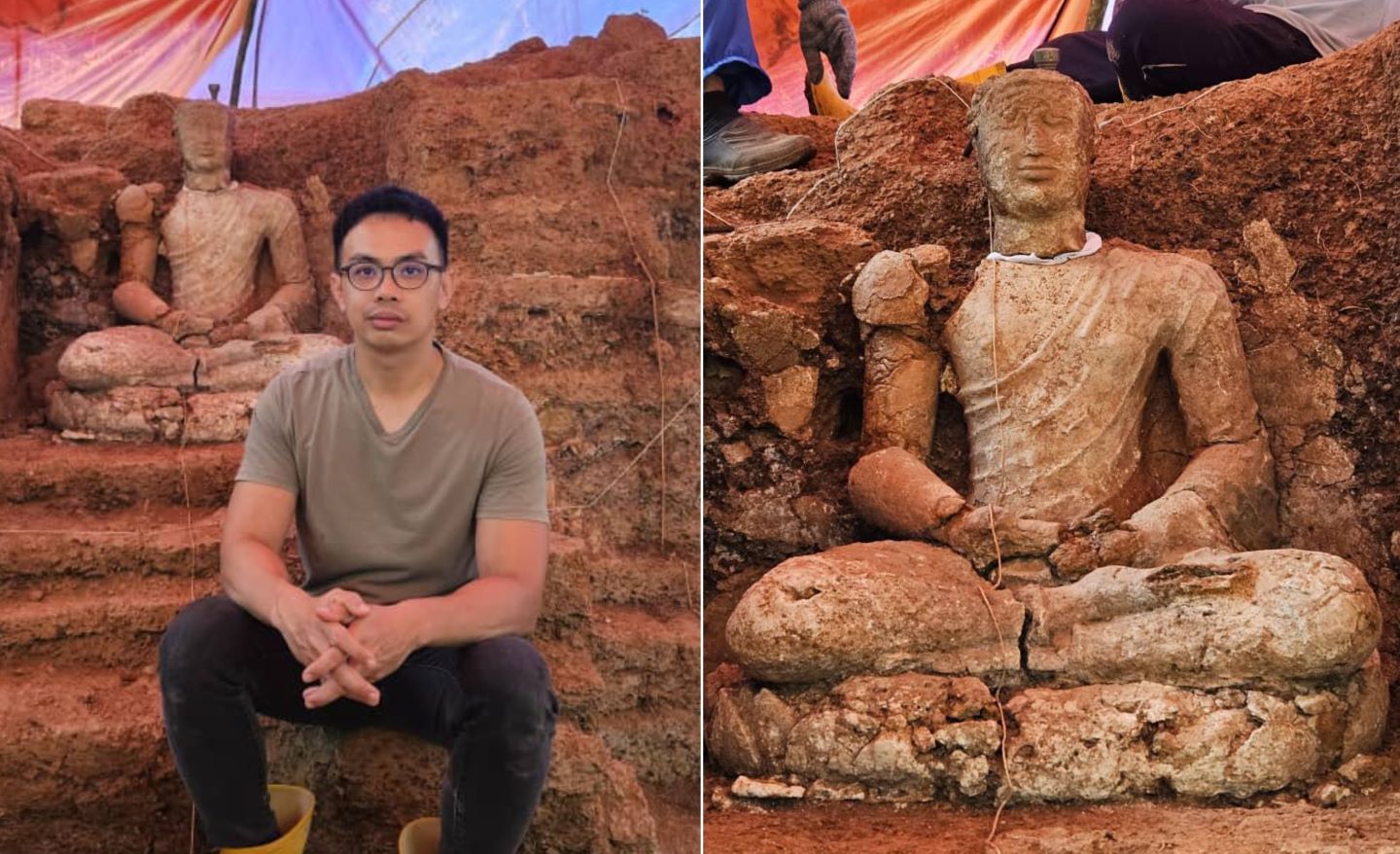Ancient Buddhist artefacts found in a new excavation at Bukit Choras
The find includes a life-size statue of Buddha and other artefacts dating back 1,200 years, predating the sites of Angkor Wat in Cambodia and Borobodur in Indonesia. The precious treasures testify to the prosperity to kingdom of Langkasuka, home to strategic trade routes. The excavations were coordinated by Universiti Sains Malaysia. For archaeologist Nasha Rodziadi Khaw, the artefacts “can offer valuable insights”.
Kuala Lumpur (AsiaNews) – Artefacts older than Angkor Wat, a Khmer temple in Cambodia, and Borobodur, a Buddhist monument in Indonesia, two world renown sites, have been found in Bukit Chora.
“With these latest discoveries, the Bukit Choras archaeological site not only reiterates the geostrategic strengths of Kedah Tua in the maritime trade routes of Southeast Asia but also serves as a hotspot for archaeo-tourism in the future,” said Tourism, Arts, and Culture Ministry’s secretary-general Datuk Roslan Abdul Rahman.
Dating between the 7th and 8th centuries, the ancient relics uncovered in northern Malaysia are remarkable finds, worthy of attention, this according to the Ministry of Tourism, Arts and Culture.
Historically and culturally significant discoveries came to light before the latest excavation, which was conducted from 21 April to 21 May this year.
A life-size statue of Buddha in a seated meditative position was among the precious antiquities, obtained thanks to researchers at Sains Malaysia University (USM); the finds represent evidence of the position of the ancient Kedah (Kedah Tua) as an important maritime civilisation in the region.
Local archaeologists say these finds could provide further historical details about the ancient Kedah period, also known by the Sanskrit name of Langkasuka. The Kingdom of Langkasuka was a prosperous, independent Hindu-Buddhist state in the northern part of the Malay Peninsula.
Astonishingly, the artefacts discovered are almost in an intact state; the life-size Buddha is complete with head, facial features, robes, and clothing.
The team from the Global Archaeological Research Centre, led by Dr Nasha Rodziadi Khaw, is also trying to salvage two other artefacts believed to be damaged Buddha figurines with missing heads.
According to the researchers, a fourth artefact might lie deeper at the site located north of Gunung Jerai.
“Comparative studies between this newly discovered Buddha figure and others from Indian, Indochinese, and the Malay Archipelago ‘civilisations’ can offer valuable insights into the ancient society of Kedah Tua,” Nasha told local media. “Such research can deepen our understanding of its religious, cultural, and artistic-technological connections with the outside world.”
The artefacts were unearthed during phase 3 of the archaeological dig, carried out thanks to the collaboration between the National Heritage Department and Universiti Sains Malaysia.
“The exploration also revealed several other artefacts such as three stone inscriptions of Buddhist mantras, described as being of great significance and meaning to Malaysia,” Nasha explained.
The artefacts are expected to be put on display, as part of an exhibition. However, it unclear whether this will be done in a museum or if an art gallery will be built at Bukit Choras, as is in the case at similar sites in Cambodia and Indonesia.
26/08/2021 16:43







.png)










